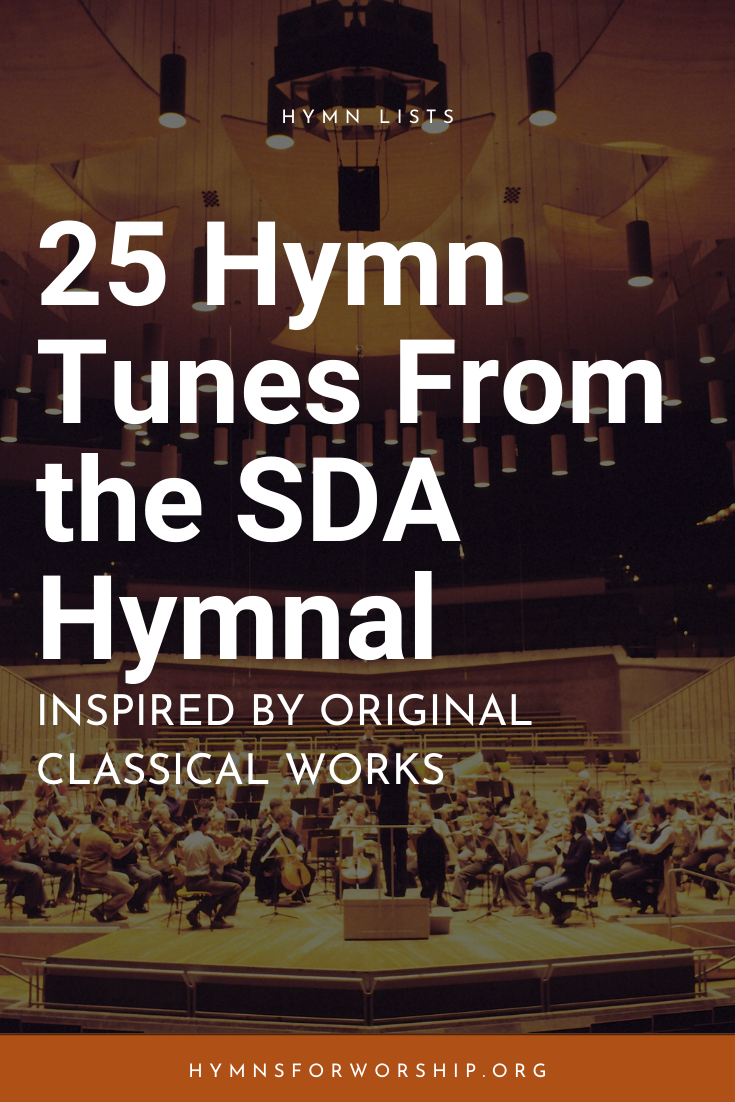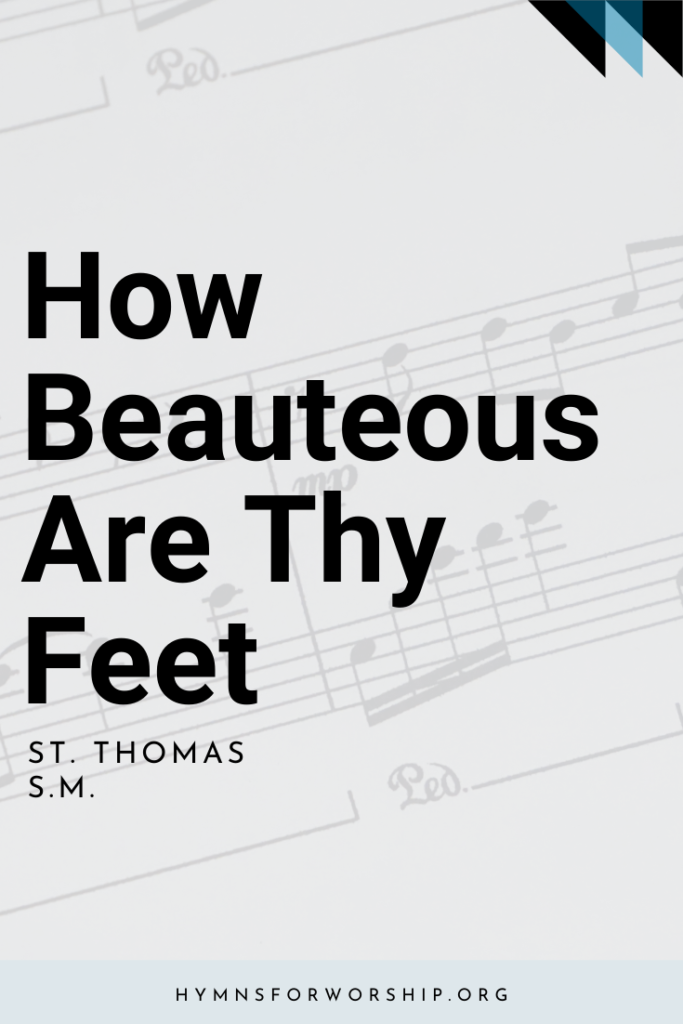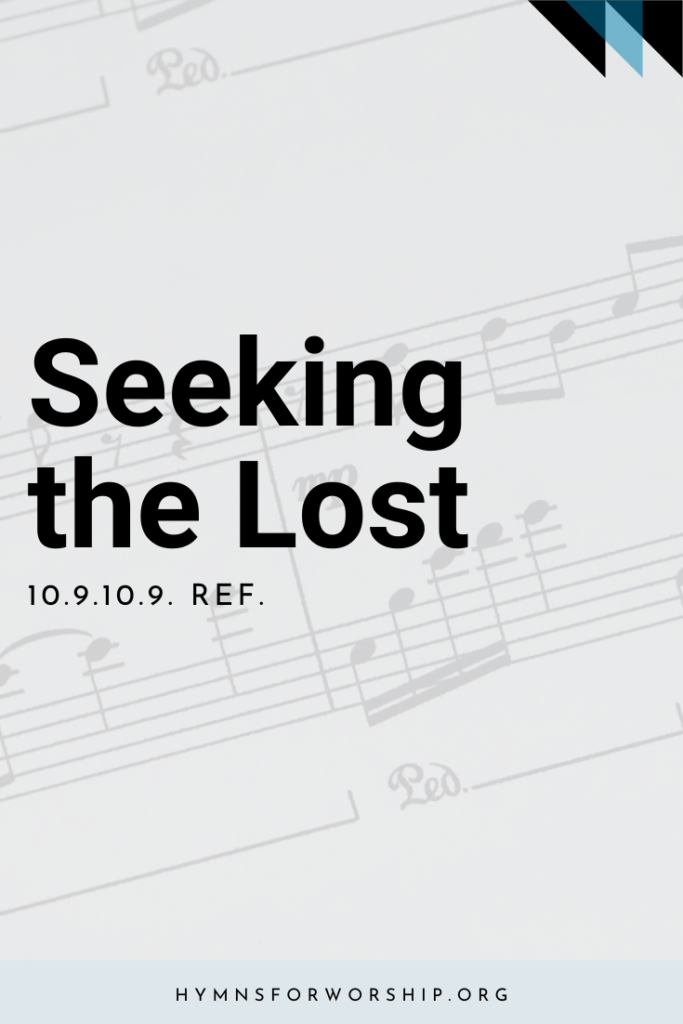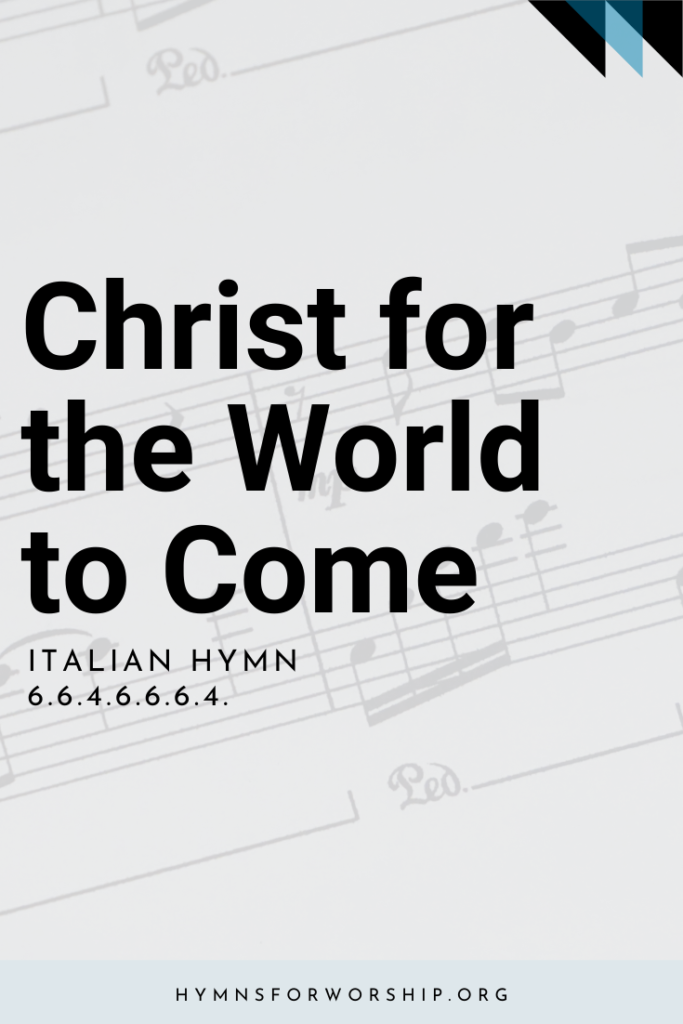
The general idea when it comes to hymns is that there is a close bond between the author and the composer. That the author writes a hymn and the composer invents a tune to suit it, and then provides the harmony to accompany the tune. However, such wasn’t always the case.
Many hymns actually worked vice versa wherein authors would write verses according to existing tunes. Hundreds of hymns are sung from borrowed tunes, such as secular songs, chants, and even classical works.
There are many reasons as to why borrowing was practiced, reasons which will NOT be covered in this article. That being said, I went ahead and researched which hymns in the SDA Hymnal were originally classical works.
A lot from the list might actually surprise you…
25. SDAH 268: Holy Spirit, Light Divine (MERCY)
Believe it or not, this hymn is actually based from a secular piano piece entitled “The Last Hope, Op. 16” which was intended to be played at salons. Although the hymn is taken from the religioso section of this fanciful piano piece, Louis Moreau Gottschalk’s intentions were not religious at all. In fact, it was meant to be a melancholic reflection of his travels to Cuba.
It became so popular that it was marketed and reproduced in all sorts of ways — separate music sheet, part of a music collection, piano roll, records, music box, etc. Eventually it got so popular, that it found its way into Protestant hymnals.
24. SDAH 497: O Gracious Father of Mankind (HALIFAX)
This hymn is based from Handel’s oratorio, “Susanna.” Many music history books erroneously record that the origin of this hymn is from the Bible. Although the plot was set to be during the time of the Israelites’ captivity in Babylon, it is highly unlikely that Susanna is a real Biblical character.
For one thing, her account is written in Daniel chapter 13, which is entirely phased out from the Bible we have in our hands today. The reason being is that it is considered apocryphal or doubtful and inauthentic.
Susanna is a story about a virtuous young woman who was falsely accused of being sexually promiscuous. At the end, Daniel was able to expose the two men who spread the rumors about her and vindicated her as a result.
Regardless of the inaccuracy of Handel’s oratorio, the actual hymn tune is based from the section where Susanna sings, “Ask if yon damask rose.”
23. SDAH 172: The Strife is O’er (VICTORY)
Giovanni Pierluigi da Palestrina is considered to be one of the most gifted Italian composers during the Renaissance period. His choral compositions greatly shaped the choral music scene not only in the Roman Catholic church but in the Protestant church as well.
As a composer that worked solely for the Roman Catholic church, and employed personally by the pope himself, Palestrina’s style is considered to be the model of those who followed after him.
It is in one of his compositions called Magnificats Tertii Toni that this hymn tune is based from, particularly the Gloria Patri section.
22. SDAH 498: Still, Still With Thee (CONSOLATION)
I was deeply moved with the simplicity of this hymn’s tune the first time I heard it sung on the radio. Later did I discover that it was based from one of the short pieces in Felix Mendelssohn’s Songs Without Words.
Songs Without Words is a series of short lyrical piano pieces. Mendelssohn wrote 8 volumes of it, consisting of six songs in each volume. Consolation belongs in the 2nd volume (op. 30), described to be played adagio no troppo.
The original key is in E major, but the SDA Hymnal shows it in D major for easier singability.
21. SDAH 414: Fruitful Tress, The Spirit’s Sowing (ALL FOR JESUS)
Modelled on the great passion settings of J.S. Bach, Stainer’s Crucifixion is considered to be amongst the most popular of all English choral works that vividly portrays the events surrounding Christ’s death on the cross. It is scored for tenor and bass soloists, organ and mixed choir, which combines recitatives, solos, and choruses.
All for Jesus is intended to be the closing chorus of this oratorio, and later on became a separate hymn sung in churches.
20. SDAH 122: Hark! the Herald Angels Sing (MENDELSSOHN)
Who does not know this popular hymn tune? Well, far from it being sung solely during the Christmas season because this is actually a Reformation hymn!
The tune was originally intended for the commemoration of Johannes Gutenberg and his invention, the movable-type printer which was one of the most significant inventions during the Renaissance. Among many other things, his printer was a huge driving force behind the spread of Protestantism across Europe. The Bible, which was normally handwritten in Latin or Greek and available only to the educated and elite, became more available to the public. Hence, it served as a catalyst for the decline of the Catholic church in many parts of Europe.
Hundreds of years later, Mendelssohn composes the Festgesang zur Eröffnung der am ersten Tage der vierten Säkularfeier der Erfindung der Buchdruckerkunst, in short the Festgesang or the Gutenberg cantata, to celebrate this significant milestone in history.
I looove the original text translated in English, because it perfectly depicts the state of the nation during the Dark Ages, and how the Word of God brought light to the people.
Let our theme of praise ascending,
Blend in music’s lofty strain
Soaring thro’ the starry main
Pealing echoes never ending
Learning dawned its light arose
Learning dawned its light arose
Thus the truth assailed its foes
Hope began to banish doubt
and soul-appaling fear
Spreading, shining
Error in their beams will vanish
Mortals roamed without a guide
Darkness clouded every nation
Not a ray could be described
All was gloom and desolation
Learning dawned its light arose
Learning dawned its light arose
Thus the truth assailed its foes
Til the earth with one accord
Shall adore and praise the Lord
It was intentionally scored for a large male chorus and two brass orchestras with timpani because it was to be premiered in a marketsquare in Leipzig.
19. SDAH 480: Dear Lord and Father (REPTON)
Just like Handel’s Susanna, Hubert Hastings Parry’s oratorio Judith is also based from the apocrypha.
Judith is full of dramatic plot twists. The first act focuses on Manasseh, the wicked king of Israel, who was about to sacrifice his children to Moloch. His wife, the queen, comforts her doomed children and sings, “Long since in Egypt’s plenteous land” to the tune of REPTON. The song recounts the ways the Lord preserved the Israelites in Exodus. I especially like the last verse of the original text:
Oh, may we ne’er forget what He hath done,
Nor prove unmindful of His love,
That, like the constant sun,
On Israel hath shone,
And sent down blessings from above
Judith comes in to the scene by interceding to stop the sacrifice. While Judith is the main hero of the story, it also focuses on the conversion of King Manasseh.
Start at 27:48
https://www.youtube.com/watch?v=qNH8NpEMvAQ&t=2023s
18. SDAH 447: Long Upon the Mountains (GREENVILLE)
The tune used for this hymn was originally from Jean Jacques Rousseau’s one-act opera called Le devin du Village (The Village Soothsayer).
As the story goes, it revolves around two young lovers Colin and Colette who suspected each other of being unfaithful. So, they consult the local village fortune teller for advice so they can be reconciled. The tune GREENVILLE comes along at the pantomime section of the opera.
The melody became so popular that later on, it reappeared as a parlor song entitled “Sweet Melissa, Lovely Maiden.” A few years later, it made a comeback, this time as a solo piano piece entitled “Variations on Rousseau’s Dream.”
https://www.youtube.com/watch?v=sJO7oyI3jD4
Apparently, the tune is here to stay, because it became an American folk song which many know today as “Go Tell Aunt Rhody.”
It appears in the SDA Hymnal using text written by Adventist poet, Annie Smith.
17. SDAH 607: God of Grace and God of Glory (WESTMINSTER ABBEY)
Henry Purcell is one of the greatest English composers that lived around the 17th century (Baroque period). A part of his prestigious career was spent as the main musician for Westminster Abbey, during which he composed sacred music exclusively.
It was during his stint in the Westminster Abbey that he composed this anthem, “O God Thou Art My God,” based on several verses from Psalm 63. The melody that is used in the SDA Hymnal is an excerpt of this anthem which appears at the end where the choir sings the final “Alleluia” section.
16. SDAH 541: Lord Speak To Me;
SDAH 548: Now Praise the Hidden God of Love;
SDAH 686: Bless Thou the Gifts (CANONBURY)
The tune used for these three beautiful hymns was actually written by Robert Schumann who at that time was under extremely stressful circumstances.
He was spending the winter in Vienna when he received a letter concerning the imminent death of his older brother Eduard. Currently working on a composition, this family issue pushed him to name it the “Corpse Fantasia.” However, he was advised by his fiancee (which later on became his wife) Clara Wieck to name it Nachtstück (Nightpieces) instead for fear that the public might not understand his music.
CANONBURY is known in the classical world as Nachtstück in F major, Op. 23 No.4, a part of Schumann’s set of four character pieces for piano.
15. SDAH 423: Glorious Things of Thee Are Spoken (AUSTRIA)
Franz Joseph Haydn, dubbed as father of string quartet and symphony, wrote this beautiful hymn tune, intended for Emperor Francis II (God Save Emperor Francis). Later on, he reused the hymn in String Quartet Op. 76, No. 62, also dubbed “Emperor.” The second movement of the piece (Poco adagio, cantabile) is in theme and variations form, and as you might have guessed already, he used AUSTRIA as the theme.
The tune caught on, and became the national anthem for Austria.
14. SDAH 48: Softly Now the Light of Day (SEYMOUR)
This melancholic hymn tune is based on the 3-act romantic English opera, Oberon or The Elf King’s Oath by Carl Maria von Weber.
The SEYMOUR tune is used in the song “Light as a fairy foot can fall” by a chorus and trio at the first act. As the chorus is sung, the elf Oberon is found asleep among the flowers while spirits, fairies and elves danced around him.
The sobriety of the hymn tune is nowhere similar from the spritely melody used in the opera.
13. SDAH 20: O Praise Ye the Lord (LAUDATE DOMINUM)
Hubert Hasting Parry is better known for his anthem, “I was glad” which was used in many of Britain’s most important royal ceremonies. That includes the coronation of King Edward VII and George V, as well as the wedding of Prince Charles and Princess Diana. And most recently, it was the processional music for Prince William and Catherine’s wedding where Kate and her father walked down the aisle with the bridal attendants.
Aside from the fame and splendor garnered by this anthem, Parry wrote other “lesser-known” anthems, but still equally exquisite and grand. One of which is Anthem No. 442 “Hear My Words, O Ye People.” It was originally composed for the Festival of the Salisbury Diocesan Choral Association in 1894.
The hymn tune LAUDATE DOMINUM is at the last section of the 16-minute long anthem.
Start at 11:40
12. SDAH 661: Holy, Holy Holy
Franz Schubert wrote the Deutsche Messe (German Mass) in 1827 which was intended for use in Catholic church service. However, it was not approved because it was deemed to be an unauthorized translation of the Mass.
Regardless of the Catholic church’s rejection of the German Mass for liturgical use, it gained a wide popularity and is still performed in many concert halls and churches today. Schubert had the congregation and the amateur choir in mind when he scored scored it in block-chordal, homophonic style.
Heilig, Heilig, Heilig (Holy, Holy, Holy) is the Sanctus section of this 9-movement mass.
11. SDAH 648: I Vow to Thee My Country (THAXTED)
Based from Gustav Holst’s seven-movement orchestral suite The Planets, THAXTED is the melodic theme used in the Jupiter section of the piece.
The concept of this work was to obviously feature the planets that orbit the sun. However, Holst intended it to be astrological rather than astronomical which is why Earth is not included as a section of the piece. Holst loved the horoscope and would cast prediction for his friends for fun.
Later on Holst harmonized it to be sung as a hymn to match Cecil-Spring-Rice’s poem about two countries, which is the text used in the SDA Hymnal.
10. SDAH 171: Thine Is The Glory (JUDAS MACCABEUS)
The tune of this hymn was written by Handel in 1747, intended for use in his oratorio, Joshua. The tune became so popular, that Handel recycled it for use in another oratorio, Judas Maccabeus.
Joshua oratorio, G.F. Handel (“See the conquering hero comes” at 51:23)
Judas Maccabeus oratorio, G.F. Handel (Chorus of youths and virgins: “See the conquering hero comes” at 01:00:15)
https://www.youtube.com/watch?v=pq1gtPpxsts
Judas Maccabeus relates to the bittersweet story of the Jews’ subjugation during 170-160 BC. Some might be actually unfamiliar with the story because it is actually recorded in the book of Macabees, one of the books in the apocrypha.
The popularity of the tune didn’t stop there. Beethoven went on to compose 12 variations for piano and cello with this tune as the main theme.
Then of course it is published in many hymnals including the SDA Hymnal, and is sung in many churches today.
9. SDAH 57: Now All the Woods Are Sleeping (INNSBRUCK)
The hymn tune name reveals it origins, which is actually about missing the place called Innsbruck. Innsbruck, ich muss dich lassen (Innbruck, I Must Leave You) is a Renaissance song written by Franco-Flemish composer Heinrich Isaac.
Years later, J.S. Bach included it in his chorale cantata In allen meinen Taten BWV 97 (In all that I do / In all my undertakings, as well as in the St. Matthew Passion.
8. SDAH 156: O Sacred Head Now Wounded (PASSION CHORALE)
The music for this hymn is actually a secular love song written by Hans Leo Hassler. The tune was made popular when J.S. Bach arranged it and included it in the St. Matthew Passion.
As you can see by now, J.S. Bach loved to re-use and recycle melodies, and this hymn was no exception. Aside from the St. Matthew Passion, it also appeared in the second movement of the cantata Sehet, wir gehn hinauf gen Jerusalem, BWV 159. Again, he reused in his Christmas Oratorio.
Franz Liszt included an arrangement of this hymn in Via Crucis (The Way of the Cross), S. 504a. It appears in the sixth station, entitled Saint Veronica.
7. SDAH 239: Jesus Priceless Treasure BWV 227 (JESU MEINE FREUDE)
Borrowed from composer Johann Crüger, Bach set it as a motet to be sung at St. Thomas Church in Leipzig. It is the longest and most complex of his motets, yet the most recorded.
6. SDAH 210: Wake, Awake for Night is Flying (WACHET AUF)
Wachet Auf is an example of a hymn that started out as hymn and was later popularized in a classical music form.
Philipp Nicolai, the author and composer of this hymn, wrote it in 1598, the time the Black Plague hit Unna, Germany. The text is based on the parable of the ten virgins (Matthew 25:1-13), as well as other Biblical passages such as Revelation 19:6-9, Revelation 21:21, and 1 Corinthians 2:9.
Years later, many composers used this tune as a main melodic theme in their compositions.
Dietrich Buxtehude composed two cantatas based on the hymn, BuxWV 100 and BuxWV 101.
Johann Sebastian Bach based his chorale cantata BWV 140 on the hymn. His son wrote a four-part choral cantata based on this hymn as well as an organ choral prelude
Felix Mendelssohn prominently featured Wachet Auf as a chorale and the main theme of the overture of his oratorio, St. Paul.
https://www.youtube.com/watch?v=jeh-IZZcUvA
Max Reger composed a fantasia for organ, with this hymn as the main theme for the second of his three chorale fantasias (Op. 52).
Herbert Blendinger wrote a chorale fantasia on this hymn (Op. 49) as well as Hugo Distler who composed an organ partita (Op. 8/2) based on this hymn.
Talk about quality!
5. SDAH 96: The Spacious Firmament (CREATION)
Die Schöpfung (The Creation) Hob XXI:2 is an oratorio written by Franz Joseph Haydn which depicts the creation story in the Book of Genesis.
The work is scored for SATB, a symphonic orchestra, and features soloists that represents the archangels Raphael, Uriel and Gabriel, a well as Adam and Eve.
While some parts of this oratorio have masonic undertones, “The Spacious Firmament” is actually based from Psalm 19.
4. SDAH 666: Cast Thy Burden Upon the Lord (BIRMINGHAM)
This is another hymn based on the oratorio, but this time from the Romantic period. Elijah, Op. 70 is composed by Felix Mendelssohn which features the life of the prophet Elijah, as depicted in 1 and 2 Kings.
3. SDAH 125: Joy to the World (ANTIOCH)
This hymn is often attributed to George Frideric Handel’s Messiah because of its resemblance to some of the chorus and recitative sections in the oratorio. However, there is no known documentary evidence that Handel actually wrote it.
On the other hand, Lowell Mason gets the credit by arranging it from Handel’s Messiah who skillfully borrowed motifs and put them artfully together.
2. SDAH 461: Be Still My Soul (FINLANDIA)
This hymn is based on a tone poem composed by Finnish composer, Jean Sibelius. Entitled Finlandia Op. 26, this piece was composed for the Press Celebrations of 1899, a covert protest against increasing suppression from the Russian Empire.
In order to avoid censorship, Finlandia had to be performed under alternative names like Happy Feelings At The Awakening of Finnish Spring, or A Scandinavian Choral March, at various musical concerts.
What it was really evoking tho through its rousing and turbulent music was the national struggle of the Finnish people. Towards the end, a calm comes over the orchestra and the serene melody of the hymn tune FINLANDIA is heard.
Later on, Sibelius arranged the work for solo piano, then reworked the Finlandia hymn into a stand-alone piece.
1. SDAH 12: Joyful, Joyful We Adore Thee (ODE TO JOY)
This thrilling hymn comes from Beethoven’s 9th Symphony, which was to be the last and greatest work Beethoven did. The first of its kind — in that he included a chorus in a symphonic work, Ode to Joy was received with exhilirating and rave responses.
According to one witness, “the public received the musical hero with the utmost respect and sympathy, listened to his wonderful, gigantic creations with the most absorbed attention and broke out in jubilant applause, often during sections, and repeatedly at the end of them.” Beethoven was given five standing ovations – people waved handkerchiefs in the air and raised their hands and hats so Beethoven, who was now deaf, could see the response.
https://www.youtube.com/watch?v=2bgSOeGKifI
Like this article? Share it!






